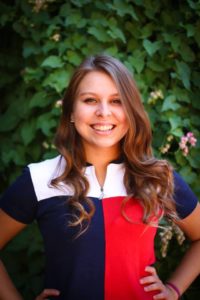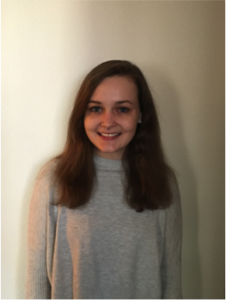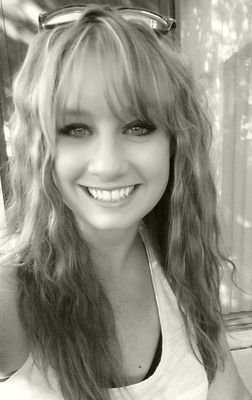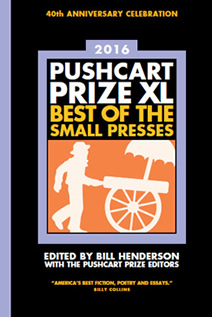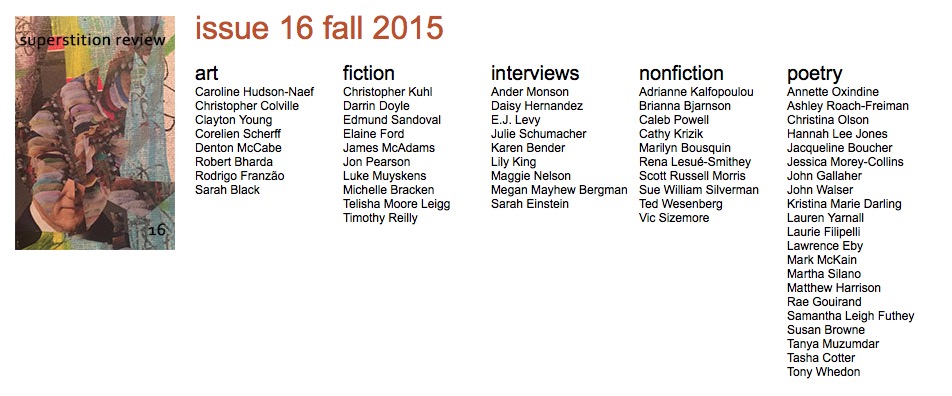Reading submissions for Superstition Review allowed me to think about the stories I love to read. I’ve found that the best stories have a character I can connect with, and also an interesting problem.
There are so many elements that can make a piece of writing good. The first thing that comes to mind is characterization, which means creating round characters, with both internal and external struggles, and a full life that exists outside the page. My sister says that when she finishes a good book, she sometimes misses the characters and the time that she’s spent with them. One of my professors will always remind us in class not to say the word character, because writers are actually creating souls.
But it’s not enough to have an interesting character sitting in a room doing nothing. What makes a character truly endearing and relatable is their problems and how they choose to deal with them. Even Nick Carroway and Jay Gatsby without their dramatic love affairs would likely not hold a reader’s attention very long.
This is where I feel we get the human experience: when we read about someone relatable that has a problem foreign to us. Or someone that is completely foreign to us, and how they’ve overcome their problems (or not). Stories are about what a character wants and what they are willing to go through to get it. These struggles create an empathetic connection between the reader and the outside world.
Scientific American recently highlighted a study that found reading literary fiction helps young students to learn empathy. The experiment presented young groups with various types of reading; literary fiction, genre fiction, nonfiction, and nothing. The young readers that read literary fiction were significantly stronger at inferring others’ thoughts and emotions. Through seeing someone else’s trials and tribulations, a person is able to learn better how to interpret other people.
Interesting souls with interesting problems create the basis of fiction that empathetically moves readers. These are the kinds of stories that I love; stories that help to build an understanding of the world around us.

Bio: John Chakravarty is an undergraduate student at ASU majoring in English and Creative Writing. He is the Fiction Editor at Superstition Review. He also interns at Four Chambers Press reading submissions. When he graduates he hopes to write, edit, and publish for the comic book industry.
